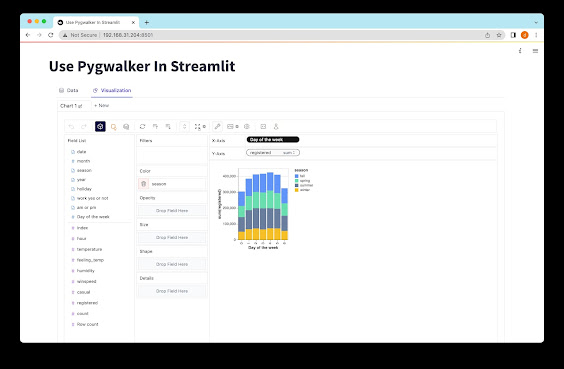GPT-2 Output Detector Demo: Comprehensive Guide and Resources
 The GPT-2 Output Detector: Demos and Resources =============================================== The GPT-2 output detector is a powerful tool capable of distinguishing between text written by humans and text generated by AI models like GPT-2. Its authenticity identification capabilities have found wide applications in various domains. In this comprehensive guide, we will explore different demos and resources related to the GPT-2 output detector, providing you with a detailed overview of this innovative tool. GPT-2 Output Detector Demo -------------------------- The GPT-2 Output Detector Demo is an online platform that showcases the capabilities of the GPT-2 output detector model. Built on the Transformers implementation of RoBERTa, a state-of-the-art natural language processing model, this demo allows users to input text and observe the predicted probabilities of whether the text was generated by GPT-2 or not. The reliability of the results significantly improves after around 50 tokens, enabling users to make more accurate assessments. GPT-2 Output Detector (Discover AI Use Cases) -------------------------------------------- Another notable application of the GPT-2 output detector is its use as an open-source plagiarism detection tool for AI-generated text. This implementation utilizes a fine-tuned RoBERTa model that incorporates the outputs of the 1.5B-parameter GPT-2 model. By inputting text into this tool, users can obtain an assessment of the likelihood that the text was written by a human. It is currently considered one of the best models available for classifying ChatGPT text. DetectGPT: A General-Purpose Method ---------------------------------- DetectGPT is a web app demo that introduces a general-purpose method for using a language model to detect its own generations. It leverages a RoBERTa model fine-tuned with the outputs of the 1.5B-parameter GPT-2 model. With DetectGPT, users can input text, and the tool will evaluate the likelihood that the text was generated by GPT-2. However, it’s important to note that the results of this tool tend to be less reliable for shorter texts. GPT-2 Demo – Exploring Text Generation Capabilities --------------------------------------------------- Although not specifically designed as an output detector, the GPT-2 Demo is worth mentioning in the context of the GPT-2 output detector. It offers users a glimpse into the text generation capabilities of OpenAI’s GPT-2 language model. By inputting a sentence, users can witness how the model completes the given text. This demo serves as an excellent example of the impressive text generation potential of GPT-2. Roberta-Base-OpenAI-Detector --------------------------- The roberta-base-openai-detector is a RoBERTa model specifically fine-tuned to detect text generated by GPT-2. The training process involved utilizing the outputs of the 1.5B-parameter GPT-2 model. With an approximate accuracy of 95%, this detector can effectively identify GPT-2-generated text. However, it’s important to consider that the accuracy of this model can vary depending on the length and complexity of the text being analyzed. GPT-2 Output Detector and 22 Other AI Tools -------------------------------------------- In a blog post titled "GPT-2 Output Detector and 22 Other AI Tools for AI Content Detection," the GPT-2 output detector is introduced as a machine learning model specifically designed to detect the authenticity of text inputs. It is built on the RoBERTa model, developed collaboratively by HuggingFace and OpenAI, and implemented using the powerful Transformers library. The GPT-2 output detector boasts high accuracy in detecting whether a given text was generated by GPT-2 or not. This tool has proven to be valuable in various AI content detection applications, including plagiarism detection, content filtering, and quality control in AI-generated content. It provides a reliable and efficient means of differentiating between human-written text and text generated by AI models like GPT-2. Conclusion ---------- The GPT-2 output detector, along with the demos and resources mentioned earlier, has significantly contributed to the field of natural language processing and AI content analysis. These tools enable researchers, developers, and content creators to assess the authenticity and origin of text, ensuring the responsible and ethical use of AI-generated content. FAQs ---- 1. How does the GPT-2 output detector work? - The GPT-2 output detector leverages a fine-tuned RoBERTa model to evaluate the likelihood that a given text was generated by GPT-2. It utilizes the predicted probabilities to distinguish between human-written and AI-generated text. 2. Can the GPT-2 output detector detect other AI models' outputs? - The GPT-2 output detector is specifically designed to detect text generated by GPT-2. While it may still detect text from other AI models, its accuracy may vary depending on the similarity of those models' outputs to GPT-2. 3. How accurate is the GPT-2 output detector? - The GPT-2 output detector, depending on the specific implementation and fine-tuning, can achieve high accuracy, with some models boasting an accuracy of around 95%. However, it's important to consider the length and complexity of the text being analyzed, as it may impact the accuracy of the detector. If you have any further questions or need additional information, please let us know! --- **About Author**:  Katie Jung is a passionate writer and AI enthusiast, sharing insights on AI, ChatGPT tips, generative AI, and startups. Her goal is to make AI accessible and empower readers to explore the transformative potential of artificial intelligence. Join her on this exciting journey of discovery.
Read more about Data Analysis
Read more about Data Analysis

Comments
Post a Comment